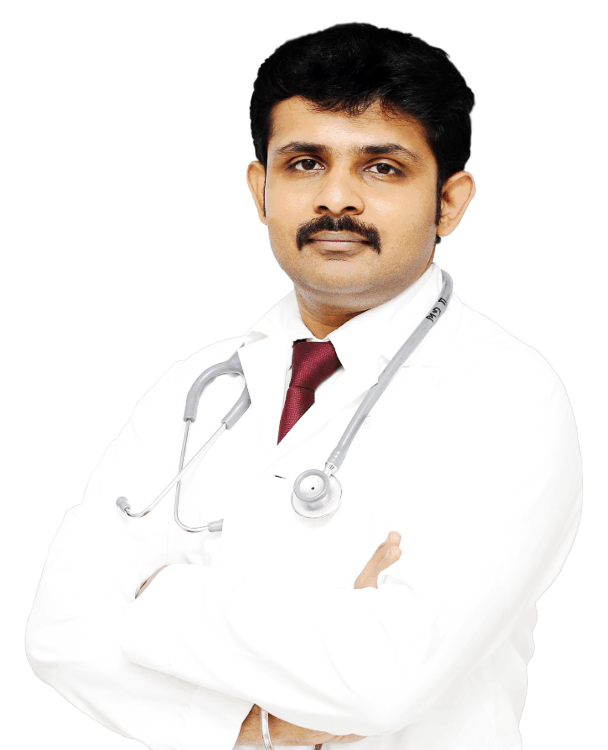The Future of Spine Surgery: Can Robotics Fully Replace Human Hands?
In the ever-evolving world of medicine, technology continues to push boundaries—and spine surgery is no exception.
From the days of traditional open surgeries to today’s minimally invasive procedures, innovation has been a constant ally.
Among the most exciting advancements is robotic-assisted spine surgery, a revolutionary technique promising greater precision, shorter recovery times, and fewer complications.
But one crucial question remains: Can robotics truly replace the skilled hands of a spine surgeon?
Let’s explore this fascinating intersection of technology and human expertise, with insights from Dr. Vignesh Pushparaj, a leading Robotic-Assisted Spine Surgery doctor in Chennai and one of the best spine surgeons in Chennai.

The Evolution of Spine Surgery
From Traditional Techniques to High-Tech Precision
Historically, spine surgery was highly invasive, demanding large incisions and extensive recovery time.
Surgical success depended heavily on the experience and skill of the surgeon.
With the arrival of advanced imaging, surgical navigation, and computer-assisted systems, spine surgery became more accurate and less traumatic for patients.
Today, robotic technology represents the next major leap.
The Rise of Robotic-Assisted Spine Surgery
Robotic systems now play a vital role in various spinal procedures including:
- Scoliosis correction
- Lumbar fusion
- Disc replacement
- Tumor removal
These systems aid surgeons in planning and executing procedures with unmatched precision—making surgeries safer and more effective.
How Robotic-Assisted Surgery Works in Spine Procedures?
Planning and Imaging
The process begins with detailed preoperative 3D imaging, which allows for:
- Personalized surgical planning based on each patient’s anatomy
- Optimal screw placement
- Minimally invasive incisions
Intraoperative Execution
Robotic arms and navigation systems provide:
- Enhanced control during surgery
Real-time feedback and intraoperative
Postoperative Benefits
Patients experience:
- Shorter hospital stays
- Less postoperative pain
- Faster return to normal life
At the forefront of this transformation is Dr. Vignesh Pushparaj, a respected Robotic-Assisted Spine Surgery doctor in Chennai known for blending technology with unmatched clinical judgment.
Human Expertise vs. Robotic Precision
Why Human Hands Still Matter?
Despite robotic advancements, the value of human expertise remains irreplaceable:
- Surgeons handle unexpected complications during procedures
- Every spine is unique—requiring tailored approaches
- Clinical decision-making and intuition cannot be replicated by machines
Complementary, Not Competitive
Robots don’t replace surgeons—they empower them.
With robotics, even the best spine surgeon in Chennai can achieve higher precision and better outcomes. It’s a collaboration, not a substitution.
Real-Life Impact: Success Stories from Chennai
Patient Success Stories
Dr. Vignesh Pushparaj has treated numerous patients using robotic-assisted techniques:
- Scoliosis Correction: A teenage patient with severe curvature now leads an active life after precise robotic-assisted spinal correction.
- Herniated Disc Relief: A working professional recovered in record time after undergoing minimally invasive robotic spine surgery.
- Lumbar Fusion: An elderly patient suffering from spinal instability now walks pain-free.
These cases reflect the real-world benefits of combining robotic technology with the experience of the best spine surgeon in Chennai.
Challenges and Limitations of Robotic Spine Surgery
Cost and Accessibility
- Robotic systems are expensive to install and maintain
- Not every hospital in India can afford this technology
Learning Curve
- Surgeons must undergo rigorous training to use robotic systems safely
- Continuous learning and certification are essential
Dr. Vignesh Pushparaj has not only mastered robotic systems but also mentors young surgeons, making him a true leader in this domain.
System Dependence
- Machines may face technical issues or limitations
Human oversight remains crucial to prevent errors

What the Future Holds: Robotics in Spine Surgery?
AI-Powered Assistance
- Future robotic systems may integrate AI for decision-making
- Predictive analytics could guide surgeons during complex procedures
Personalized Care
- Custom implants based on the patient’s spine structure
- Higher success rates through data-driven customization
Mentorship and Training
- Robotics will be a core part of surgical education
- Experts like Dr. Pushparaj will shape the future of spine surgery in India
Conclusion
So, can robotics replace human hands in spine surgery?
The answer is clear—not entirely. While robots enhance surgical precision and improve patient outcomes, human expertise remains the heart of any successful operation.
With pioneers like Dr. Vignesh Pushparaj, patients benefit from the best of both worlds—technological advancement and surgical excellence.
If you are seeking the most advanced care for spinal conditions, consult thebest spine surgeon in Chennai who combines Advanced technology with compassionate care.
Frequently Asked Questions (FAQs)
Q1: What is robotic-assisted spine surgery?
Robotic-assisted spine surgery uses advanced computer technology and robotic tools to aid surgeons in performing precise spinal procedures. It enhances accuracy and reduces recovery time.
Q2: Is robotic spine surgery better than traditional surgery?
While both methods can be effective, robotic surgery offers benefits like smaller incisions, less blood loss, and quicker recovery. However, success also depends on the surgeon’s skill.
Q3: Can robotic systems make surgical decisions?
No. Robotic systems follow pre-planned guidance. The surgeon still makes all critical decisions during the operation.
Q4: How do I choose the right spine surgeon for robotic-assisted surgery in Chennai?
Look for experience, certifications, and expertise in robotics. Dr. Vignesh Pushparaj, a leading Robotic-Assisted Spine Surgery doctor in Chennai, is highly recommended for complex spinal issues.
Q5: Is robotic spine surgery safe for elderly patients?
Yes. In fact, the precision and minimally invasive nature of robotic surgery make it an excellent option for elderly patients with reduced healing capacity.






0 Comments